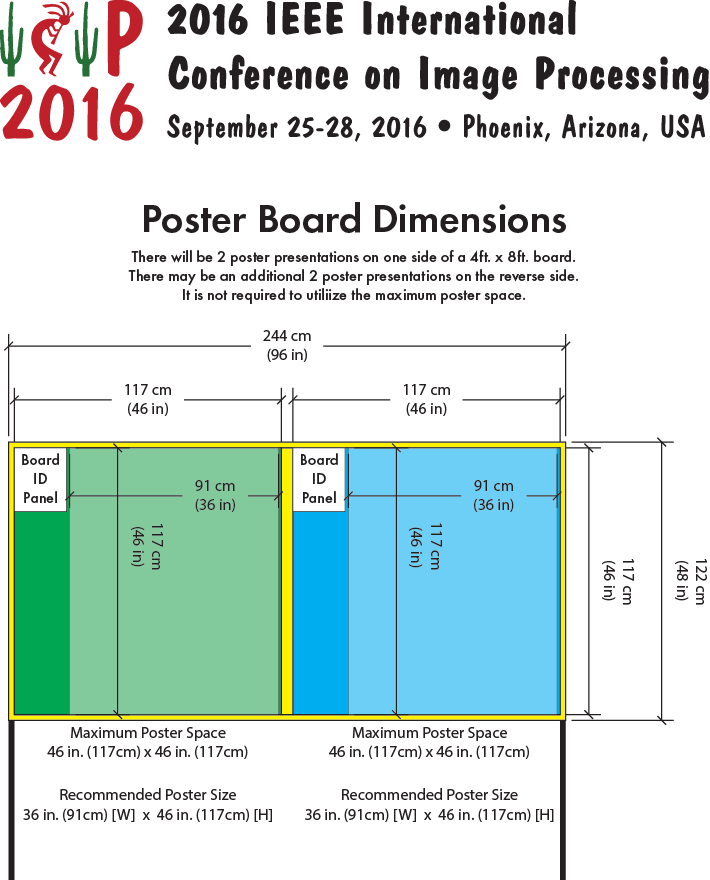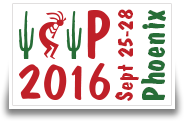Papers that are accepted must be presented at the conference by an author in order to avoid having the paper withdrawn from IEEE Xplore.
See NO SHOW POLICY.
Please check the posted Technical Program in order to determine the presentation format of your paper (lecture presentation or poster presentation).
Lecture Presentations
PRESENTATION TIME: Presentation time is critical; each paper is allocated 20 minutes for lecture sessions, including time for questions, session chair introductions, and any set up that is not completed in advance. We recommend that presentation of your slides should take about 16 minutes, leaving 4 minutes for introduction by the session chair and questions from the audience. To achieve appropriate timing, organize your slides or viewgraphs around the points you intend to make, using no more than one slide per minute. A reasonable strategy is to allocate about 2 minutes per slide when there are equations or important key points to make, and one minute per slide when the content is less complex. Slides attract and hold attention, and reinforce what you say - provided you keep them simple and easy to read. Plan on covering at most 6 points per slide, covered by 6 to 12 spoken sentences and no more than about two spoken minutes.
Be prepared to begin your presentation as soon as the prior presenter has finished; it is important to keep on schedule. You should meet with your session chair during the break immediately prior to your session. Meet inside or near the door of the presentation room. If the room is not being used, this will give you a chance to test any presentation equipment you will be using. Copying your files to the computer before the session will also save you some time during your presentation. Note: The presentation computer has ONLY a USB port. There is no CD-ROM or other disc drive.
ORGANIZATION OF IDEAS: Make sure each of your key points is easy to explain with aid of the material on your slides. Do not read directly from the slide during your presentation. You shouldn't need to prepare a written speech, although it is often a good idea to prepare the opening and closing sentences in advance. It is very important that you rehearse your presentation in front of an audience before you give your presentation at ICIP. Surrogate presenters must be sufficiently familiar with the material being presented to answer detailed questions from the audience. In addition, the surrogate presenter must contact the Session Chair in advance of the presenter's session.
EQUIPMENT PROVIDED: All lecture rooms will be equipped with a computer, a video projector, and a microphone. Each computer will have a USB port as well as PowerPoint and Acrobat Reader software. There will be no other equipment available.
Each computer will have a recent version of the Windows OS installed, a USB port, as well as PowerPoint and Acrobat Reader software. Remember to embed all your fonts into your presentation, if you are using any special font or plug-in such as MathType.
Please, pay attention to the following critical points:
- There WILL NOT be an overhead projector in the rooms
- There WILL NOT be a CD-ROM drive in the presentation room
- Make sure your presentation does not run into a problem on Windows 7 platform, if you are a Mac or Linux user
- If you will be playing video or animated media, make sure it runs on Windows Media Player
- Embed all the fonts in your presentation
Keep in mind that some of the lecture presentations will be given in quite large lecture halls. When preparing your slides, make sure that the entire audience will be able to see your presentation.
Poster Presentations
Poster sessions are a good medium for authors to present papers and meet with interested attendees for in-depth technical discussions. In addition, attendees find the poster sessions a good way to sample many papers in parallel sessions. Thus it is important that you display your message clearly and noticeably to attract people who might have an interest in your paper.
Each poster session is 80 minutes long. You must remain present for the entire duration of your poster session. Please arrive at the poster area about 15 minutes before your session begins and report to the session chairs.
All posters should remain on the boards for the entire session time. Everyone should mount their poster on the boards before the session begins.
You should prepare a 5- to 10-minute presentation of your work, concentrating on the key innovation, and be ready to interact with the audience that approaches your poster. Please put up your poster before the session, and take it down immediately following the session. Adhesive velcro will be available to mount the poster. If you have difficulty locating any supplies, please contact the session chairs or the conference registration desk. Also note that any equipment used in the poster area should be battery-operated, since power will not be provided on the floor.
If your poster is constructed of multiple pieces of paper, it is highly recommended that you plan to be at your poster location sufficiently in advance to allow you to complete mounting of your poster prior to of the start of your presentation block. Alternatively, you may consider taping together all of the pieces before you mount the poster on the board to speed up the mounting process.
DIMENSIONS: For each paper accepted within a poster session, a poster board space is reserved with dimensions 117 cm (46 inches) tall and 117 cm (46 inches) wide. Your poster must fit within a dimension of 102 cm (40 inches) wide by 102 cm (40 inches) tall. The poster is not required to fill this entire space; Posters MAY NOT EXCEED 117cm (46 inches) WIDTH OR 117cm (46 inches) HEIGHT. Push pins or other attachment methods will be provided. Note that THERE WILL BE NO ACCESS TO ELECTRIC OUTLETS. Thus, your laptop should be fully charged if you want to use it as part of your presentation.

(Click image for high-resolution PDF)
The boards will be arranged in rows. Each reserved paper space will be assigned a number. The number, called the Board Number, will identify the place to post your poster.
ORGANIZATION OF IDEAS: Your poster should cover the key points of your work. It needs not, and should not, attempt to include all the details; you can describe them in person to people who are interested. The ideal poster is designed to attract attention, provide a brief overview of your work, and initiate discussion. Carefully and completely prepare your poster well in advance of the conference. Try tacking up the poster before you leave for the conference to see what it will look like and to make sure that you have all of the necessary pieces.
FORMATTING: The title of your poster should appear at the top in CAPITAL letters about 25mm high. Below the title put the author(s)' name(s) and affiliation(s). The flow of your poster should be from the top left to the bottom right. Use arrows to lead your viewer through the poster. Use color for highlighting and to make your poster more attractive. Use pictures, diagrams, cartoons, figures, etc., rather than text wherever possible. Try to state your main result in 6 lines or less, in lettering about 15mm high so that people can read the poster from a distance. The smallest text on your poster should be at least 9mm high, and the important points should be in a larger size. Use a sans-serif font (such as "cmss" in the Computer Modern family or the "Helvetica" PostScript font) to make the print easier to read from a distance.
Make your poster as self-explanatory as possible. This will save your efforts for technical discussions. There will not be any summaries given at the beginning of the poster sessions, so authors need not prepare any overhead slides for their poster presentations. You may bring additional battery-operated audio or visual aids to enhance your presentation. No electricity will be available for use by poster presenters.
TIME: Prepare a short presentation of about 5 to 10 minutes that you can periodically give to those assembled around your poster throughout the poster session. If possible, more than one author should attend the session to aid in presentations and discussions, and to provide the presenters with the chance to rest or briefly view other posters.


